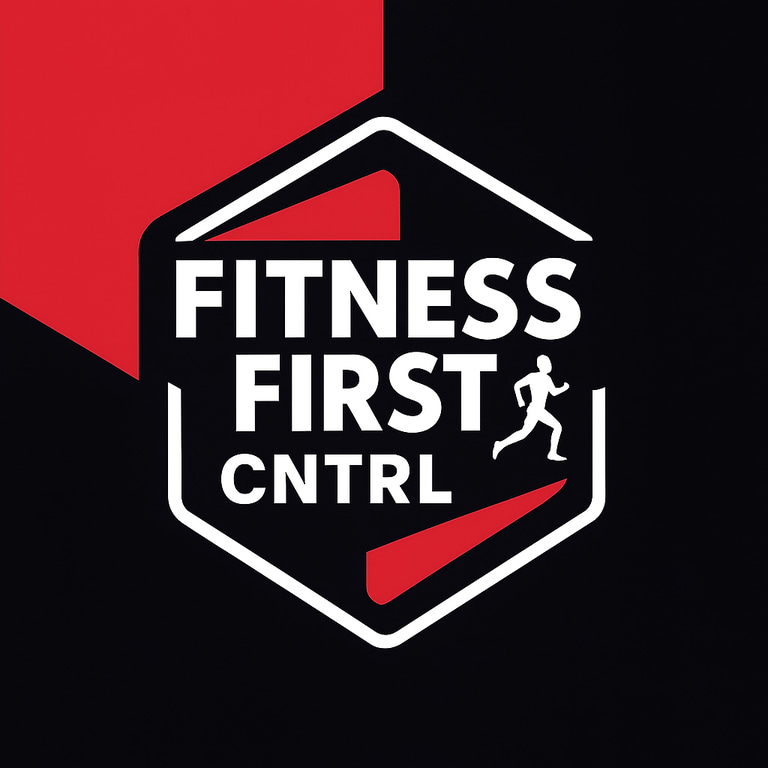USE CODE "fitnow" FOR 30% OFF your first purchase
Why You're Not Building Muscle Despite Consistent Training
7/9/20257 min read


The Frustration of Stalled Muscle Growth
For many individuals embarking on their fitness journey, the initial enthusiasm of engaging in resistance training can quickly transform into disillusionment when the anticipated muscle growth does not occur. This common experience affects beginners and intermediate lifters alike, who often grapple with the frustration of investing significant time and effort in the gym without seeing the desired results. The early stages of resistance training are typically marked by rapid changes in strength and physique, yet there often comes a point where progress stalls, leading individuals to question their training approach and overall dedication.
Consistency is undeniably vital in any muscle-building program. Committing to a regular workout schedule and maintaining a disciplined diet are essential components of achieving muscle hypertrophy. However, it is disheartening for many when they find that their growth plateaus despite apparent adherence to these principles. This stagnation can evoke feelings of inadequacy and disappointment, prompting individuals to seek answers and reassess their strategies. The journey to muscle hypertrophy is not linear; rather, it is fraught with various challenges that can hinder one’s progress.
Various factors can contribute to this frustrating experience, ranging from inadequate nutrition to ineffective training protocols or even insufficient recovery time. As individuals navigate through their training regimes, understanding the underlying causes of stalled muscle growth becomes crucial. Acknowledging these elements not only helps to contextualize the hurdles faced but also paves the way for informed adjustments to enhance future progress. This blog post aims to explore these challenges in depth, providing insights and strategies for overcoming the obstacles that impede muscle development.
Common Mistakes in Muscle Building
Building muscle effectively requires dedication to not only the training regimen but also the overall approach to fitness. However, several common mistakes can hinder muscle growth, even for those who train consistently. These include:
1. Not Training Hard Enough: One of the most prevalent mistakes is failing to push oneself during training sessions. Adequate intensity is crucial for stimulating muscle fibers, and without it, results may be minimal. Progressive overload, where you gradually increase weights or resistance, can help in ensuring that your body is adequately challenged.
2. Neglecting Nutrition: Nutrition plays a vital role in muscle-building efforts. Many individuals underestimate the importance of a balanced diet that includes sufficient protein, healthy fats, and carbohydrates. Poor nutritional choices can impede recovery and muscle repair, ultimately limiting growth. It is essential to consume an adequate amount of calories and focus on nutrient-dense foods to support training goals.
3. Lack of Progression in Workout Plans: Sticking to the same workout routine for an extended period can lead to plateaus. The body adapts to repetitive movements, making progression crucial. Regularly revising workout plans by increasing weights, altering exercises, or adding more sets can help break through these stagnation points and further muscle development.
4. Inadequate Recovery: Recovery is often overlooked in the pursuit of muscle growth. Insufficient rest can lead to fatigue and overtraining, which may result in decreased performance and injuries. Ensuring adequate recovery time between workouts, incorporating rest days, and getting sufficient sleep are integral to building muscle effectively.
5. Unrealistic Expectations: Lastly, many individuals set unattainable goals for muscle gain. It's important to have realistic expectations based on individual circumstances, including body type, genetics, and time commitment. Acknowledging that muscle building is a gradual process can help maintain motivation and consistency.
Addressing these common mistakes could significantly enhance muscle-building efforts. By training harder, focusing on nutrition, ensuring progressive routines, allowing for recovery, and maintaining realistic goals, individuals stand a better chance at achieving their muscle growth objectives.
💪 Want to Fast-Track Your Muscle Gains?
Stop guessing. My FREE 6-Week Transformation Guide includes:
Full training plans
Nutrition breakdowns (incl. high-protein food lists)
Recovery protocols
Everything you need to build muscle and stay consistent
👉 Click the button below and start transforming today.
Tips to Overcome Each Mistake
To effectively build muscle despite consistent training, it is essential to address common mistakes that can hinder progress. Here are actionable tips that can guide individuals towards a more effective training regimen.
First, improving training intensity is critical. It is advisable to incorporate compound movements into your routine, such as squats and deadlifts, which engage multiple muscle groups simultaneously. Additionally, consider setting specific goals for each workout, whether it’s increasing the weight lifted or the number of repetitions performed. Research indicates that progressively increasing resistance is key to stimulating muscle growth. Implementing advanced training techniques, such as drop sets or supersets, can also elevate intensity levels.
Next, optimizing nutrition plays a significant role in muscle development. Ensure your diet includes a balance of macronutrients, focusing on sufficient protein intake; studies recommend aiming for approximately 1.6-2.2 grams of protein per kilogram of body weight daily. Consuming a nutrient-dense pre- and post-workout meal can enhance recovery and fuel the body appropriately. Including a mix of complex carbohydrates and healthy fats aids energy levels while supporting muscle repair.
Implementing progressive overload is another fundamental principle in muscle building. Gradually increase your training volume by adding weights, increasing the number of sets, or reducing rest periods between sets. This method continuously challenges your muscles, promoting growth over time. Additionally, consider alternate forms of overload, such as varying your training program every few weeks to prevent plateaus.
Enhancing recovery protocols is equally crucial. Establishing a regular sleep routine that ensures 7-9 hours of quality sleep per night can optimize muscle recovery and hormone regulation. Incorporating active recovery days, which may consist of lighter exercise or mobility work, can reduce muscle soreness, allowing the body to recuperate effectively.
Lastly, managing expectations realistically is vital in this journey. Understand that muscle building is a gradual process that varies individually. Setting short-term and achievable goals will help maintain motivation and avoid discouragement. Consulting with a fitness professional can provide tailored strategies and accountability, ensuring a successful muscle-building experience.
Sample Weekly Workout Split for Muscle Growth
For individuals aiming to enhance muscle growth, a well-structured workout routine is essential. The following sample split comprises six days of training, each focusing on distinct muscle groups, incorporating both compound and isolation exercises. This example is primarily tailored for beginners and intermediates, offering a clear framework that can be adapted based on personal fitness levels.
Day 1: Chest and Triceps
1. Barbell Bench Press: 3 sets of 8-12 reps
2. Incline Dumbbell Press: 3 sets of 8-12 reps
3. Chest Flyes: 3 sets of 10-15 reps
4. Tricep Dips: 3 sets of 8-12 reps
5. Tricep Pushdowns: 3 sets of 10-15 reps
Day 2: Back and Biceps
1. Pull-Ups: 3 sets of 6-10 reps
2. Bent-Over Barbell Rows: 3 sets of 8-12 reps
3. Lat Pulldowns: 3 sets of 10-15 reps
4. Barbell Bicep Curls: 3 sets of 8-12 reps
5. Hammer Curls: 3 sets of 10-15 reps
Day 3: Legs
1. Squats: 4 sets of 8-12 reps
2. Lunges: 3 sets of 10-15 reps per leg
3. Leg Press: 3 sets of 8-12 reps
4. Hamstring Curls: 3 sets of 10-15 reps
5. Calf Raises: 3 sets of 15-20 reps
Day 4: Shoulders and Abs
1. Overhead Dumbbell Press: 3 sets of 8-12 reps
2. Lateral Raises: 3 sets of 10-15 reps
3. Front Raises: 3 sets of 10-15 reps
4. Plank: 3 sets of 30-60 seconds
5. Bicycle Crunches: 3 sets of 15-20 reps
Day 5: Full Body
1. Deadlifts: 3 sets of 8-12 reps
2. Push-Ups: 3 sets of 8-15 reps
3. Kettlebell Swings: 3 sets of 10-15 reps
4. Dumbbell Snatch: 3 sets of 8-12 reps per side
5. Mountain Climbers: 3 sets of 30 seconds
Day 6: Active Recovery
Incorporate light cardio, yoga, or stretching to enhance recovery.
Adequate rest days and a balanced diet are essential to complement this workout split for optimal muscle growth. Each exercise should be performed with diligence to ensure effective resistance training, allowing muscles to build progressively.
The Importance of Recovery, Sleep, and Nutrition
When it comes to building muscle, many individuals often focus solely on their training regimen, neglecting critical components such as recovery, sleep, and nutrition. Understanding the physiological processes involved in muscle repair is vital for maximizing growth and performance. Each time you perform resistance training, you create micro-tears in the muscle fibers. It is during the recovery phase, facilitated by adequate sleep and proper nutrition, that these fibers repair and grow stronger.
Sleep plays a crucial role in recovery and overall performance. During deep sleep stages, the body enhances protein synthesis and releases growth hormone, both of which are essential for muscle repair. Insufficient sleep can lead to increased levels of cortisol, a stress hormone that can impede muscle gain and promote fat accumulation. Therefore, it is recommended that individuals aim for 7-9 hours of quality sleep each night to support hormonal balance and recovery processes, allowing for effective muscle growth.
Nutritionally, a balanced diet rich in protein, healthy fats, and carbohydrates is fundamental to supporting muscle development. Protein, in particular, provides the amino acids necessary for muscle repair and growth post-exercise. Aim for sources such as lean meats, fish, dairy, legumes, and plant-based proteins to ensure adequate intake. Healthy fats, found in avocados, nuts, and olive oil, support hormone production, while carbohydrates replenish glycogen stores necessary for sustained energy during workouts. Additionally, meal timing can influence recovery, so consuming a balanced meal or snack within 30-60 minutes post-exercise can be beneficial.
To optimize recovery, it is essential to incorporate rest days into training schedules, ensuring adequate time for muscle repair. Stretching, foam rolling, and other recovery techniques can further enhance the process. By prioritizing recovery, sleep, and nutrition, individuals can create a supportive environment for muscle growth that complements their consistent training efforts.
Visual Aids and Resources
Visual aids play a crucial role in enhancing comprehension, especially in complex subjects such as muscle building. When individuals engage in consistent training with the aim of muscle growth, it is vital to understand that this process is multifaceted, encompassing various components such as training, nutrition, and recovery. A well-designed infographic or chart that illustrates the muscle growth triangle could serve as an effective tool, enabling readers to visualize how these elements interconnect and influence one another.
The muscle growth triangle concept emphasizes that training alone is not sufficient for optimal muscle development. Instead, an appropriate balance of rigorous exercise, a well-rounded diet rich in protein and other vital nutrients, and effective recovery strategies is essential. Including a visual representation of this triangle can help to clarify the relationships between different aspects of muscle building, aiding individuals in identifying areas where they may need to focus more heavily.
Furthermore, incorporating additional resources for further reading enhances the depth of understanding for readers. Books, research studies, and reputable online platforms dedicated to fitness and nutrition can provide valuable insights into innovative training techniques, dietary strategies, and recovery methods. By encouraging readers to delve deeper into these resources, one can foster a more comprehensive approach to their muscle-building journey.
Ready to Finally Build the Muscle You’ve Been Training For?
You’ve just learned why your progress might be stuck — now it’s time to fix it.
My Free 6-Week Muscle-Building Transformation Guide gives you everything you need to break through your plateau and start seeing real results:
✅ Proven training programs (no fluff, just effective workouts)
✅ Step-by-step nutrition strategies (plus a full high-protein food list)
✅ Recovery tips used by top athletes
✅ Mindset, consistency, and progress tracking tools
This isn’t just a quick fix — it’s a complete transformation plan designed to work, even if you’ve struggled before.
👉 Download the guide now and start building the muscle you deserve.


